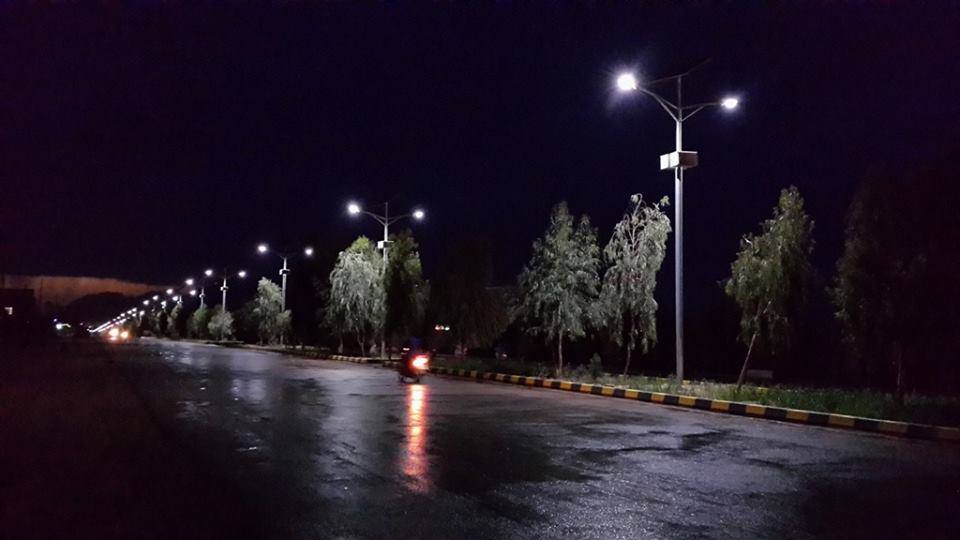For centuries, cities have been illuminated by traditional street lighting systems. But in recent years, a shift has been taking place towards modernizing these systems with LED technology.
This transformation is changing the way our streets are lit up and provides many benefits for both citizens and businesses alike. From cost savings to increased energy efficiency, LED lighting is becoming an increasingly popular choice for city infrastructure projects.
In this article, we explore the journey from traditional to LED-based street lighting systems and how its revolutionizing urban spaces around the world.
History of Traditional Street Lighting
The history of traditional street lighting began in 1809 when the first gas-lit street lamps were lit in London. This marked an important milestone for mankind and ushered in a period of increased public safety at night.
Electric arc lights followed shortly after, with Paris being one of the first cities to adopt them on a large scale during the 19th century. Soon after, electric incandescent bulbs became available which provided greater light intensity than their predecessors.
These bulbs would be used extensively until they were eventually replaced by LED lighting systems towards the end of the 20th century. LEDs are now widely regarded as one of the most efficient and cost-effective forms of modern street lighting thanks to their long life span and low energy consumption rates.
They also offer more control over light output levels compared to traditional lighting systems, allowing municipalities to customize illumination levels based on traffic patterns or specific environmental needs within certain areas. Overall this has led to increased visibility and public safety while improving energy efficiency across entire cities around the world – making it easier than ever before for citizens to stay safe at night while using less electricity overall!
From Incandescent to LED: An Overview

From Incandescent to LED: An Overview Street lighting systems have made tremendous strides in the last century, transitioning from traditional incandescent bulbs to modern LED technology. The journey has been long and filled with a variety of advancements that have allowed for safer and more efficient lighting solutions.
This article will provide an overview of the changes that took place from incandescent lights to LEDs, including their differences in efficiency, light quality, design flexibility, environmental impact, and cost savings. Incandescent bulbs were widely used since they were first introduced in 1879 by Thomas Edison; however, their use gradually decreased due to their high energy consumption and short lifespan when compared with other types of lighting such as fluorescent or LED lights. Despite being inefficient energy-wise, these products remained popular because they provided reliable illumination at reasonable prices.
However, as time passed manufacturers began exploring alternatives that could offer better performance while still meeting customer demands. The introduction of fluorescent lamps brought a revolution as it was able to produce higher levels of brightness than previous technologies using significantly less electricity than its predecessor – up to 75% less power consumption! Moreover, this type of lamp had longer lifespans; some models even lasted up to 30 times longer than standard incandescents making them extremely economical over time.
Fluorescent lamps became increasingly popular but eventually lost ground due to concerns about mercury content which posed health risks if broken or disposed of improperly.
How LEDs are Revolutionizing the Way We Light Our Streets
LED lighting is revolutionizing the way we light our streets. This modern technology has allowed us to replace traditional street lights with energy-efficient LED lighting systems that can provide more safety and better visibility while using up to 80% less energy.
LED streetlights are designed to last significantly longer than their traditional counterparts, reducing maintenance costs and eliminating the need for frequent replacements. Additionally, LEDs offer greater flexibility in terms of design options – from color temperature control to dimming capabilities – allowing cities and municipalities to customize their outdoor lighting solutions according to their needs.
With improved illumination quality, lower cost of installation and operation, as well as increased environmental sustainability, LED streetlights are changing the way we view public lighting solutions today.
Conclusion

The journey towards modernizing street lighting systems has been a long and arduous one, but with the advent of LED Street Lighting Systems, it is finally coming to an end. The improved illumination provided by these technologies not only allows for greater safety on roads at night but also provides considerable cost savings over traditional lighting systems through its energy-efficient design.
By taking advantage of this revolutionary technology, cities around the world are now able to benefit from brighter streets coupled with higher-quality illumination that make nighttime commutes easier and safer than ever before.